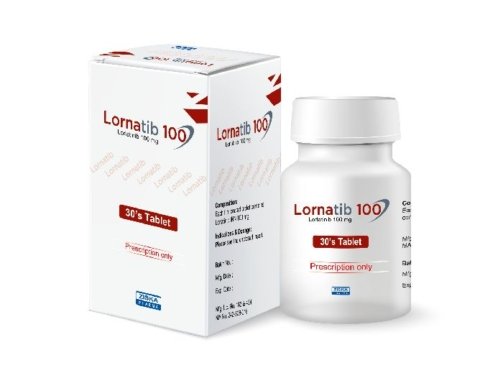 Cart is empty
Cart is empty Finerenone 20 mg (Kerendia)
0.00$
Finerenone is the active ingredient in the pharmaceutical drug Finerenone 20 mg. Its main application is in the treatment of type 2 diabetes-related chronic kidney disease (CKD). A new therapeutic option for individuals at risk of progressive kidney deterioration and cardiovascular events is provided by finerenone, which is a member of the class of medications known as non-steroidal mineralocorticoid receptor antagonists (MRAs).
Class of Pharmacology
Class of Therapeutic Agents: Renal and Cardiovascular
Class of Pharmacology: Mineralocorticoid Receptor Antagonist Non-steroidal
Formula for the molecule: C21H22ClN3O6
Administration Mode: Oral
Tablets in strengths of 10 mg and 20 mg are available (the higher dose form is Finerenone 20 mg).
Mechanism of Action
The kidneys and heart’s mineralocorticoid receptors are specifically blocked by finerenone. Patients with type 2 diabetes and chronic kidney disease (CKD) frequently exhibit overactivation of these receptors, which causes fibrosis and inflammation in the cardiovascular and renal systems. Finerenone assists by blocking these receptors:
Reduce kidney tissue fibrosis and inflammation
Reduce the rate at which chronic kidney disease develops
Reduce the chance of cardiovascular problems, including myocardial infarction and heart failure
Finerenone has less endocrine-related adverse effects and a more focused and safe profile than conventional steroidal MRAs (such as spironolactone).
Indications
The uses of Finerenone include:
Management of persons with type 2 diabetes who have chronic kidney disease (CKD)
lowering the risk of non-fatal myocardial infarction, cardiovascular death, end-stage kidney disease (ESKD), prolonged eGFR decline, and heart failure hospitalization
Administration & Dosage
The patient’s estimated glomerular filtration rate (eGFR) will determine whether a starting dose of 10 mg or 20 mg once daily is advised.
Patients may begin taking 20 mg per day if their eGFR is ≥60 mL/min/1.73 m².
The dosage should be modified according to serum potassium levels for patients whose eGFR falls between 25 and 60 mL/min/1.73 m².
Regular evaluations of serum potassium levels and renal function should be used to titrate dosage.
Contraindications
Hypersensitivity to any of the excipients, including finerenone
Serum potassium level at start >5.0 mmol/L
severe impairment of the liver (Child-Pugh class C)
Use in conjunction with potent CYP3A4 inhibitors (such as itraconazole and ketoconazole)
Precautions and Warnings
Hyperkalemia: During the first four weeks of treatment, patients’ serum potassium levels should be regularly checked.
Reduced Renal Function: Patients with eGFR <25 mL/min/1.73 m² are not advised to take this medication; dose modifications may be necessary depending on renal function.
Drug Interactions: CYP3A4 metabolizes finerenone. Steer clear of potent inducers or inhibitors of this enzyme.
Pregnancy and Lactation: Because there is little human data, it is not advised to do so during pregnancy or breastfeeding.
Side Effects
Typical adverse effects consist of:
Elevated potassium levels, or hyperkalemia
Low blood pressure is known as hypotension.
Hyponatremia, or low sodium
Weariness
Lightheadedness
Serious adverse effects that are less frequent:
Acute damage to the kidneys
Arrhythmias of the heart (caused by potassium abnormalities)
Clinical Studies and Efficacy
Large-scale clinical trials like FIDELIO-DKD and FIGARO-DKD have shown that finerenone is effective in reducing cardiovascular risks and greatly slowing the progression of kidney damage in people with type 2 diabetes. Finerenone demonstrated in both trials:
A substantial decrease in the likelihood of kidney failure
Reduced rates of heart-related deaths and hospitalizations
A respectable safety record in contrast to a placebo.
Storage Instructions
Keep below 25°C in a cool, dry location.
Avoid dampness and direct sunshine.
Keep out of children’s reach.
Packing
Depending on local availability, Finerenone 20 mg is usually provided in blister packs with 10 or 30 tablets.
Conclusion
Patients with type 2 diabetes and chronic renal disease can benefit from the well-tolerated, clinically validated therapy option known as Finerenone 20 mg. Because it addresses both renal protection and cardiovascular risk reduction, it represents a substantial improvement in both nephrology and cardiology. Finerenone presents a possible substitute for traditional treatments due to its unique mechanism of action and excellent safety profile, which helps patients experience fewer side effects and greater long-term results.
Order Now At Mdx Pharma bd….
To order from MDX Pharma BD, visit their website at https://mdxpharmabd.com, where you can browse products and place orders online. For inquiries or orders via email, contact emedicarepharma@gmail.com. Alternatively, call (+88) 01929123476. Their address is 29, Abdullahpur, Uttara, Dhaka-1230, Bangladesh.
1. What is the purpose of Finerenone 20 mg?
In adults with type 2 diabetes, Finerenone is mainly used to treat chronic kidney disease (CKD), which lowers the risk of kidney failure, heart attacks, strokes, and heart failure.
2. How is finerenone produced?
A non-steroidal mineralocorticoid receptor antagonist (MRA) is finerenone. It functions by inhibiting aldosterone, a hormone that, when excessive, can lead to inflammation and heart and kidney damage.
3. What is the usual Finerenone dosage?
Tablets containing 10 mg and 20 mg of Finerenone are frequently available. The dosage, which typically starts at 10 or 20 mg once daily, is determined by kidney function (eGFR) and blood potassium levels (serum K+).
4. Is it possible to combine Finerenone with other blood pressure or diabetic medications?
Yes, however, care must be taken with:
ARBs or ACE inhibitors (may elevate potassium)
Diuretics
NSAIDs: Consult your physician frequently to prevent interactions.
5. Is it better to take Finerenone in the morning or at night?
It can be taken whenever you like, but for consistency, it’s recommended to take it at the same time every day. Absorption is not greatly impacted by food.
| Generic Name: | Finerenone |
|---|---|
| Theraputic Category: | MRA |
| Pack Size: | 1×10's |





